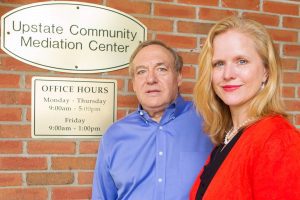Author: Melinda Young – Greenville Journal
 On one side of the “homeless triangle” conflict, you have West Earle Street homeowner Matt Johnson. A year ago, his daughter’s little pink bike disappeared. On a hunch, he went to the Salvation Army, across Rutherford Street from his house, and he found it. “There was a guy with a BS story about buying it from someone at the library for $5,” Johnson says. “I got it back, but it was a hassle.”
On one side of the “homeless triangle” conflict, you have West Earle Street homeowner Matt Johnson. A year ago, his daughter’s little pink bike disappeared. On a hunch, he went to the Salvation Army, across Rutherford Street from his house, and he found it. “There was a guy with a BS story about buying it from someone at the library for $5,” Johnson says. “I got it back, but it was a hassle.”
On the other side of the conflict are service organizations trying to help marginalized people improve their health and job prospects and find permanent housing. “There are a lot of people we have taken off the streets around here,” says the Rev. Deb Richardson-Moore of Triune Mercy Center on Rutherford Street. Triune Mercy Center is a nondenominational mission church for the homeless. It employs two social workers that help people with mental disabilities. “We had a man last year who had lived on the streets for 31 years,” Richardson-Moore says. “Now he has an apartment and a car.”
The divisions run deep between some North Main residents and their nonprofit neighbors that feed, shelter, and help the homeless. People, living or working in the homeless triangle, report seeing more transient people on the streets even as housing prices rise. In March, the Salvation Army requested a zoning change for a half-acre of its nearly 4-acre campus, to allow it to add more living space in its shelter. Residents weren’t pleased.
“The Salvation Army encountered substantial opposition to its rezoning, and this alerted them that there had been this neighborhood resentment building up,” says Lawson Wetli, an attorney who volunteers at the Upstate Mediation Center. In March, the zoning change was approved by the city’s planning commission. In May, the City of Greenville Board of Zoning Appeals also gave the Salvation Army the green light for a special exception, which would make it possible for The Salvation Army to expand its cafeteria and improve campus safety.
Currently, mediators are meeting with property owners, service providers, city/county officials, homeless people, local businesses, and others to hear each group’s concerns and brainstorm ideas for potential improvements and solutions. “Our function is to facilitate a conversation between various parties,” says Richard Kahn, an attorney, volunteer mediator, and director of the board of the Upstate Mediation Center. Kahn and Wetli are co-mediators in this case.
In Greenville County, about 991 people are homeless on any given night, and 126 of them do not have a bed in a homeless shelter or transitional housing, according to the South Carolina Coalition for the Homeless PIT Report. “We’re one of the fastest-growing cities in the nation,” says Susan McLarty, a mission outreach coordinator with Westminster PCUSA and a stakeholder of the Greenville Homeless Alliance. While higher income people are drawn to the city, so are people who are homeless because they might benefit from residents’ generosity, McLarty says.
After speaking with members of the Greenville Homeless Alliance about the homeless triangle’s challenges, McLarty was told to find a realistic solution to alleviate the North Main community’s tension, and someone suggested contacting the Upstate Mediation Center. “I contacted the Mediation Center’s executive director and gave her a brief overview, asking if this was something she’d want to help Greenville Alliance with, and she said, ‘Absolutely! I have mediators just dying and ready to work on this kind of case,’” McLarty says.
Last year, The Upstate Mediation Center handled 628 total mediations, 500 of which were family mediations. Sixty percent of the latter were resolved.
The homeless triangle mediation process will end — possibly in July — with documented action items that groups have agreed to follow. These could include homeless providers agreeing to patrol their property more often to clean up trash and homeowners agreeing to serve on the homeless providers’ boards so they can learn more about their nonprofit neighbors, Wetli says. There also will be some ideas that the community could act on to reduce chronic homelessness. “We want people to walk away with actionable items they voluntarily agree to do,” she says.
There already are some signs that the mediation is helping. McLarty believes the mediation process contributed to The Salvation Army’s rezoning approval, which received only one negative vote.
Stephen Bomar, business and human resources manager for WYFF-TV, the Salvation Army’s Rutherford Street neighbor, participated in the mediation, finding it helpful to hear all viewpoints. “You can’t bridge the gap unless you know where the impacts of the gaps are,” he says. From Bomar’s perspective, the Salvation Army has been a good neighbor: “Whenever we’ve brought up something with them, they’ve been responsive.”
Johnson also met with the mediators and learned that homeowners need to speak more often with law enforcement about their problems with homeless people and listen to their perspective. “We’re early in the mediation process, and we’re still waiting to hear feedback,” he says. “I’m cautiously optimistic.”
GREENVILLE JOURNAL | COMMUNITY | JUN 20, 2017 | MELINDA YOUNG




